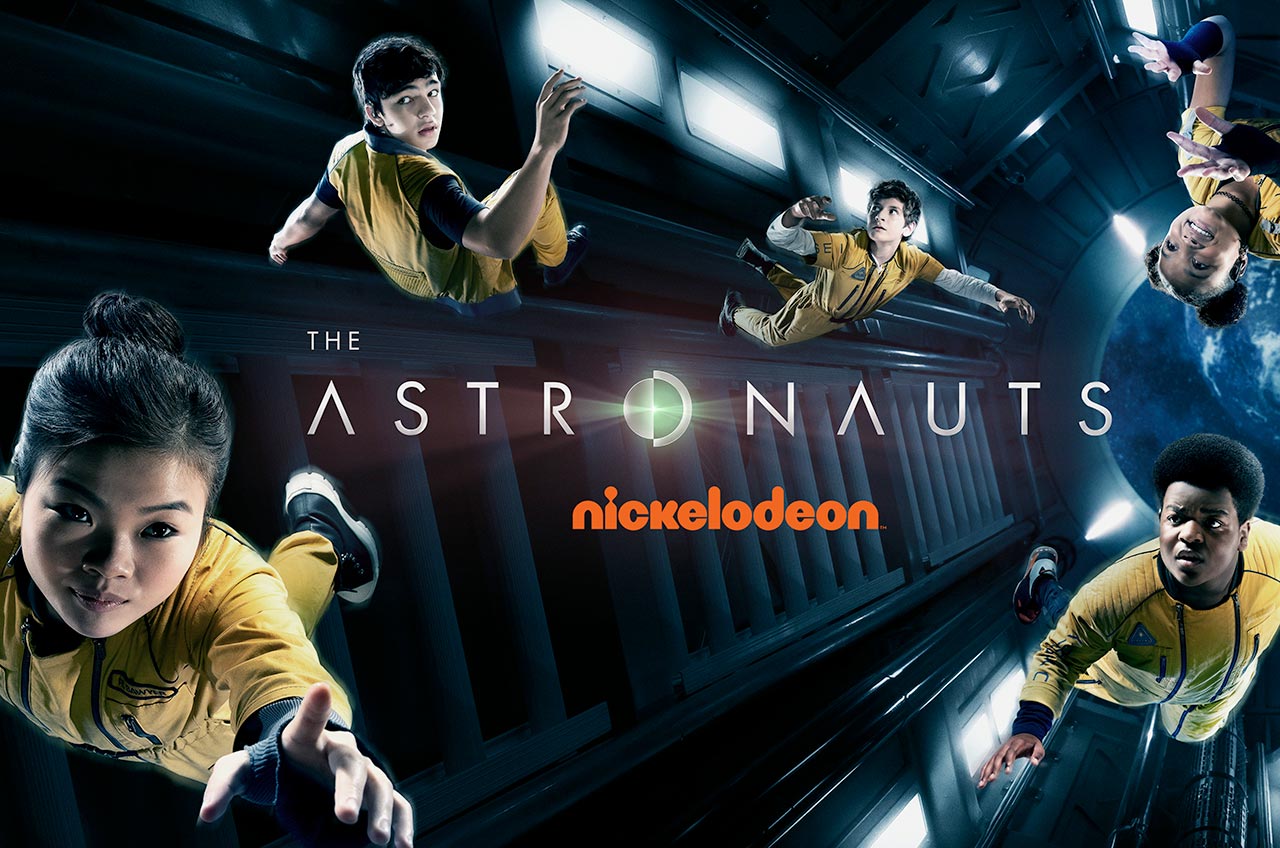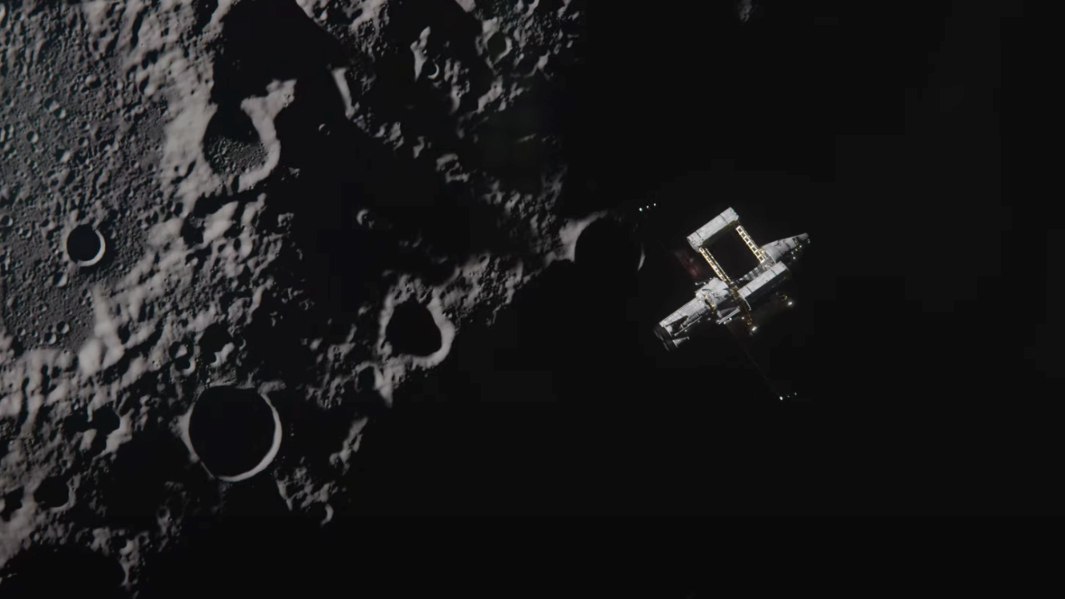Exclusive: Inside Nickelodeon's 'The Astronauts' space adventure with showrunner Daniel Knauf
Award-winning writer/producer Daniel Knauf is best known for creating an eclectic body of work that leans into darker, adult material like HBO's acclaimed supernatural saga, "Carnivàle," NBC's "Dracula" starring Jonathan Rhys Meyers, Starz' "Spartacus: Blood and Sand," and NBC's Emmy-winning police procedural "The Blacklist."
Now he's taking his sterling reputation and talents into outer space with Nickelodeon's "The Astronauts," a new family-friendly sci-fi series from Ron Howard and Brian Grazer's Imagine Entertainment. This refreshing adventure show airs its first two episodes on Friday, Nov. 13 and surrounds a group of whiz kids who sneak onto the spaceship Odyssey II and are accidentally launched into space toward a mysterious asteroid while the craft's AI system malfunctions.
The series is directed by DGA Award nominee Dean Israelite ("Are You Afraid of the Dark?," "Power Rangers") who also serves as an executive producer, Jonathan Frakes ("Star Trek: Discovery," "Star Trek: Picard"), and Marcus Stokes ("Criminal Minds," "The Flash").
Nickelodeon's 'The Astronauts' got tips on space from real NASA astronaut
Knauf not only penned the show's 10 episodes, but also acts as "The Astronauts" executive producer and showrunner. We connected with him to learn about how this throwback project originated, the challenges of working on a big special effects shoot, dealing with issues of weightlessness, and how the design for the Odyssey II was created on a restaurant napkin.
How did you get on board Nickelodeon's hopeful, kid-centric project?
As an artist I'd been wanting to do something for a long time that multiple generations could sit on a sofa and enjoy. There's so much darkness on TV and I don't think it reflects reality. I don't believe familial relationships on TV reflect reality either as so many of them are dysfunctional. So I thought let's do something that makes people feel good about being human. Plus, you always want to do something different. I've done a Western, I've done "Carnivàle," I've done the epic, I've done "Dracula," "Spartacus," and with "The Blacklist" I've done the procedural thing. Now let's see what I can do here.
Can you describe the pitch to Imagine and what narrative themes did you wish to explore?
Breaking space news, the latest updates on rocket launches, skywatching events and more!
From the get-go, meeting with Imagine, I told them this was not going to be "Kids Shot Into Space And Hijinks Ensue." I wouldn't do that show. What's of interest to me is doing what would happen in reality if five untrained children were inadvertently launched into space. It would be fraught with danger and tension and these kids trying to get along.
They all come from different backgrounds and they're all finding their way and they're going to have solutions that would never occur to adults since they're obviously putting fresh eyes on every problem. The humor would come from character, not jokes. I don't write joke-driven stuff because in reality, life isn't joke-driven.
This show in many ways is sort of a throwback to the kinds of shows they were making in the '50s and '60s. Things like courage are valuable attributes in any homo sapiens. There are no stupid parents on this show. We don't have kids disobeying their parents without a fallout.
Since these kids are millions of kilometers away from their parents, we get to really do a deep dive when it comes to the process of individuation. And what that painful moment is like where you realize maybe my parents are wrong. For the parents, it's seeing that child go away forever to become an adult. It's this essential process of growth and I think every episode features that.




What was the inspiration for the Odyssey II design and how was it working with a big special effects team?
I've never done a space show before so I was sort of a babe in the woods. I had this super embarrassing moment when I saw my first set of effects shots. I was horrified. I told them it looked like a toy. There's no directional lighting! Where's the ambient lighting? It's practically a wireframe! [laughs] Our special effects guy very patiently said not to worry and that this was just placement in the frame and was very early in the process. As a showrunner I've gotten an education in the special effects arena and it's been really neat to see these shots evolve. You're basically painting on a blank canvas. It's wholly fabricated on the computer in photoreality.
When Netflix's "Away" came on, I'd be watching it with great interest and think, "Oh, our launch is better than their launch." [laughs]. Our launchpad is on an island in the middle of a bay and I wanted to see the shockwave across the water.
And the weightlessness thing is very difficult to do on a television schedule because it's very time consuming. Wire rig removal and those kinds of things were all new to me. Your heart's in your throat when you've got a twelve-year-old dangling thirty feet above the floor of the set.
With Imagine on board, because they've got such a legacy in space dramas, there were no compromises made as far as the science goes. When I first came in I didn't want to deal with weightlessness on the show because it's going to be impossible. I thought I'd just go with the Ridley Scott thing of having an announcement, "Artificial Gravity Engaged."
But our production designer and Dean Israelite, my AP director and colleague, said we'd do it with various configurations that would allow for centrifugal gravity. We literally worked it out on a napkin at the Black Angus restaurant. I thought we'd make it like a tri-lobal, face-on design. That way we could have two-story, almost bus-like outriggers. It's like no spaceship that I've seen on TV. I was pleased with the fact that we really stuck with the science.
Stephen Petranek has been the consultant on almost all of Imagine's space projects and we'd be able to run scripts past him and make sure we had the science right.
Related: 15 Space Travel Tips from an Astronaut
Was there a specific aesthetic you wanted to capture for the spaceship to distinguish it from other fictional sci-fi craft in movies and TV?
I wanted there to be a consumer design ethos, especially in the crew quarters, that would make the ship look more like a yacht or a private aircraft. There would be pseudo industrial design cues combined with exotic materials like carbon fiber. It's not as swoopy as the "Star Trek" world but it wasn't going to look like "Apollo 13" anymore either.
I'd say it would look like the first class cabin in an Emirates airplane. There's a lot of Bird's Eye maple and they're very understated. And that's what we brought to the party. Then when you get into the cockpit and the work areas, these are places we don't visit as consumers.
What do you hope audiences take away most from this new Nickelodeon series?
What's really a kick about "The Astronauts," is that there's 10 half-hour episodes, so you get like 10 pounds of coffee in a 5-lb. can. There's really a lot going on. I got to use all these screenwriting techniques I picked up on "The Blacklist," another incident driven show. Like how to cram a lot of narrative into a very small container. The episodes fly by and there's no mid-season slump on this show. Every chapter is a three-ring circus. The last three episodes make the first two episodes look boring!
Everybody who's been involved in the show, from the tippy top of Nickelodeon, all the way down to the PAs, everyone involved in building this pyramid feels like this is special. This is one I'm going to remember and be proud of. And that's my job as a showrunner, to encourage that sort of ethic.
I hope people watch the show and feel that ecstasy of recognition when you see things you haven't seen before done quite that way, but they've experienced something like that emotionally. My job description is to move people. I think everybody's relationship with their TV is trying to make sense out of their own journey.
By dramatizing journeys with various characters, whether they're FBI agents or freaks or vampires or gladiators is to dramatize those things that are universal in a way it hasn't been dramatized so often that it becomes cliche. To find that untilled patch of soil, turn it over and have the audience go, "Oh Goodness!"
"The Astronauts" premieres on Nickelodeon at 7 p.m. EST on Friday, Nov. 13.
Follow us on Twitter @Spacedotcom and on Facebook.

Jeff Spry is an award-winning screenwriter and veteran freelance journalist covering TV, movies, video games, books, and comics. His work has appeared at SYFY Wire, Inverse, Collider, Bleeding Cool and elsewhere. Jeff lives in beautiful Bend, Oregon amid the ponderosa pines, classic muscle cars, a crypt of collector horror comics, and two loyal English Setters.


